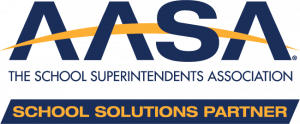In the August 2022 issue of School Administrator magazine, published by The School Superintendent’s Association (AASA), Dr. John Gatta, CEO of ECRA Group, contributed an article on the topic of academic return on investment (ROI). The article can be viewed, in context, via AASA’s digital magazine. For your convenience, the article is also posted below.


Academic Return on Investment
AS A SCHOOL DISTRICT LEADER, you make decisions every day to optimize the way community resources are allocated to ensure all students receive a high-quality education. Now that school systems have transitioned back to pre-pandemic operations, school district leaders are once again faced with the timeless issue of academic return on investment.
That is, how do we quantify the impact that investments in programs, interventions and school improvement efforts are having on student outcomes?
Documenting the impact of programmatic investments is the essence of evidence-based practice. Local education policy has long relied on the notion of being research-based to justify investments by citing theory or academic studies. While research-based approaches may justify program design, academic return on investment is an analytic approach that quantifies the local impact of a particular program or intervention on student growth.
Right Questions
The key insight that drives academic ROI is recognizing that students will continue to grow with or without a particular investment. Academic ROI quantifies the impact of an investment on student growth above and beyond growth that would have happened anyway.
Districts often ask: “How did students in the program grow?”
Districts should ask: “How did students in the program grow academically compared to how they would have grown without the program?”
Academic ROI is measured by comparing student growth with the program to student growth without the program.
The Process
Academic ROI is more powerful than a formula. It is a way of doing business that recognizes that decisions we make as leaders for how to invest community resources have an impact on student outcomes. Effectively implementing academic ROI requires that school leaders untangle the notion of investments from the return that each investment provides in terms of student growth.
School districts have struggled to answer academic ROI questions because of the difficulty in establishing meaningful comparisons or control groups against which to benchmark results.
Academic ROI analyzes individual students’ longitudinal growth trajectories and the trajectories of similar students to create personalized growth projections for each student assuming typical growth. The projection represents where a student would likely perform without the program.
Academic ROI then measures the distance between observed performance with the program to projected performance without the program.
Actionable Insights
Take a moment to imagine applying this framework to every program within the district by listing each program, the number of students each program serves, the financial investment for each program and the academic return on investment of those programs.
Over time, you will improve programs through the continuous quality improvement process, and you will demonstrate to the board and the community that you are a good steward of their resources.
ECRA can help school systems adopt more evidence-based practices to document the ROI that various programs, interventions and expenditures have on student outcomes. ECRA Group has worked with more than 1,000 school districts.
JOHN GATTA is CEO of ECRA Group based in Schaumburg, Ill. E-mail: johngatta@ecragroup.com. Twitter: @jlgatta







